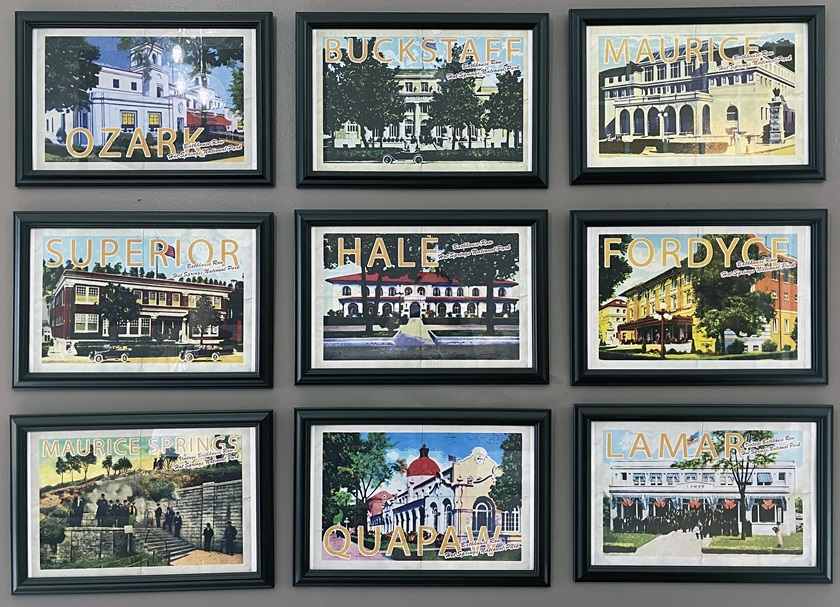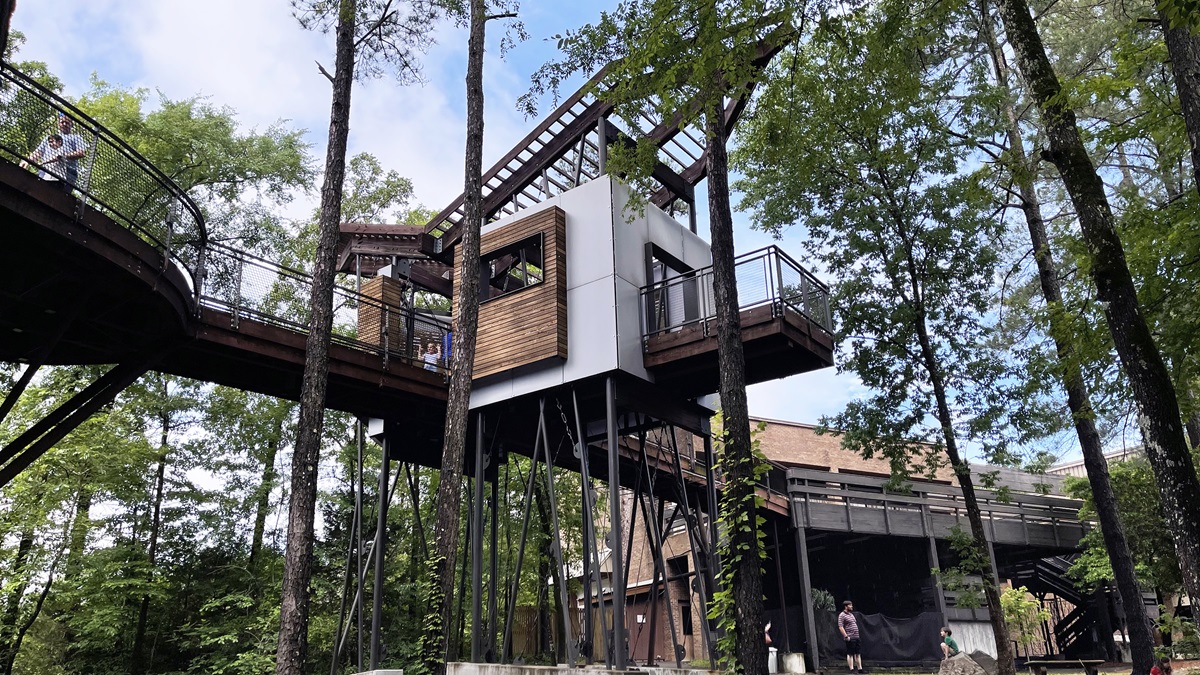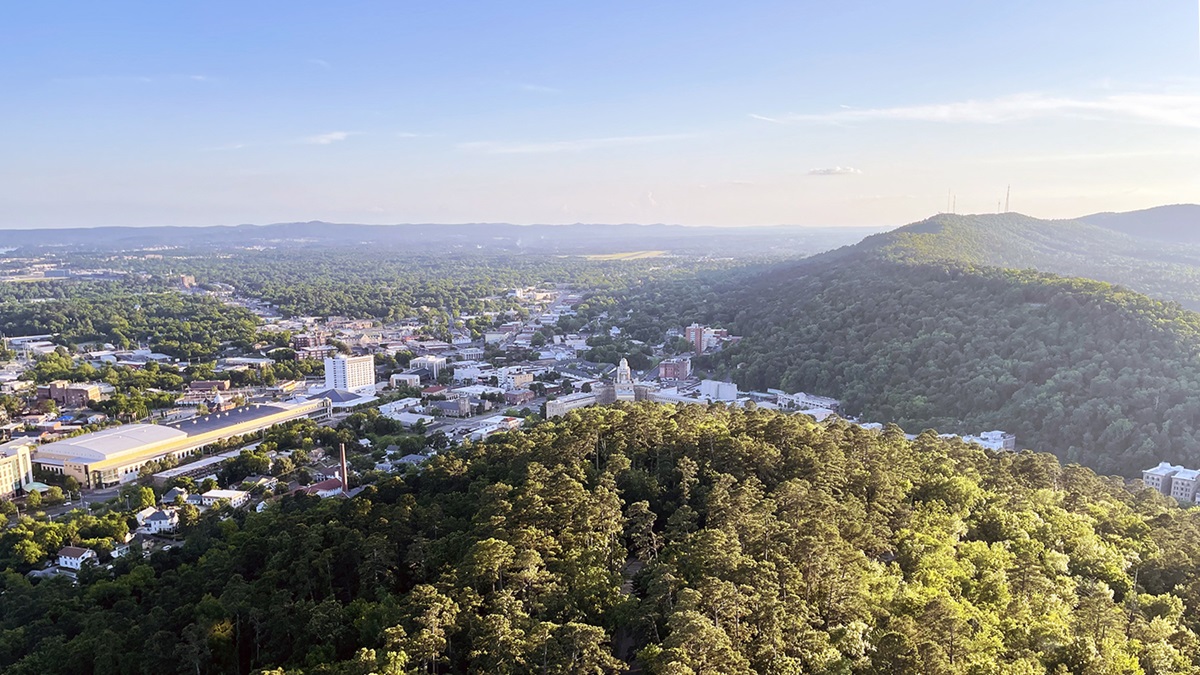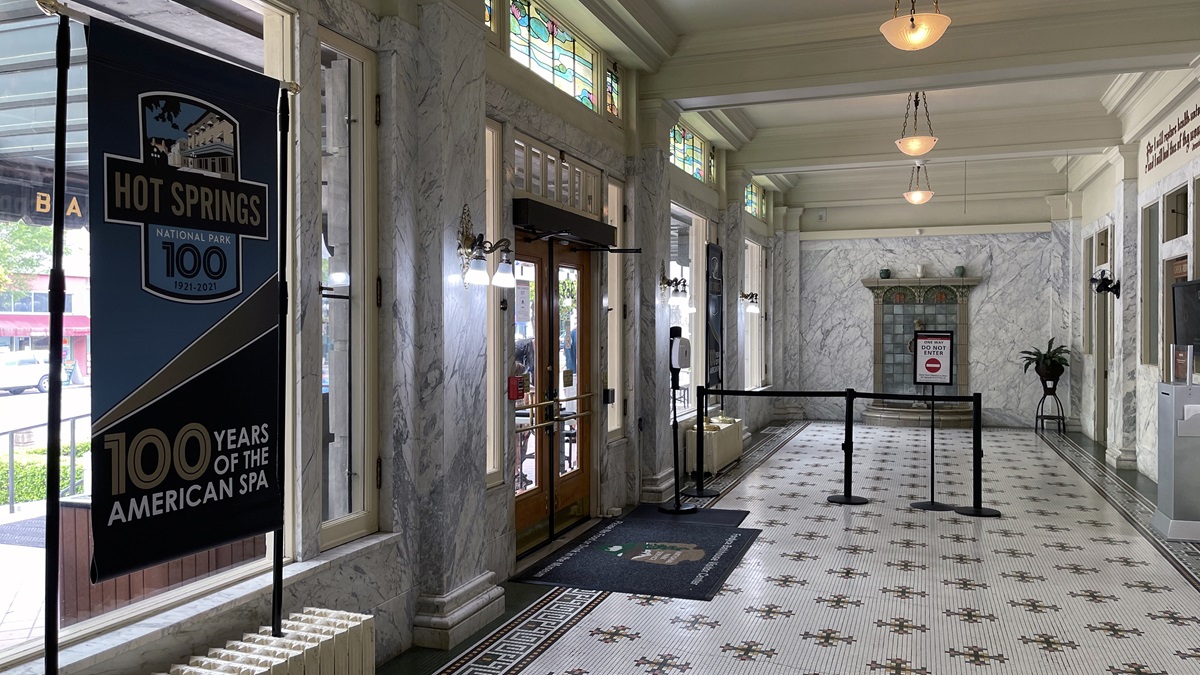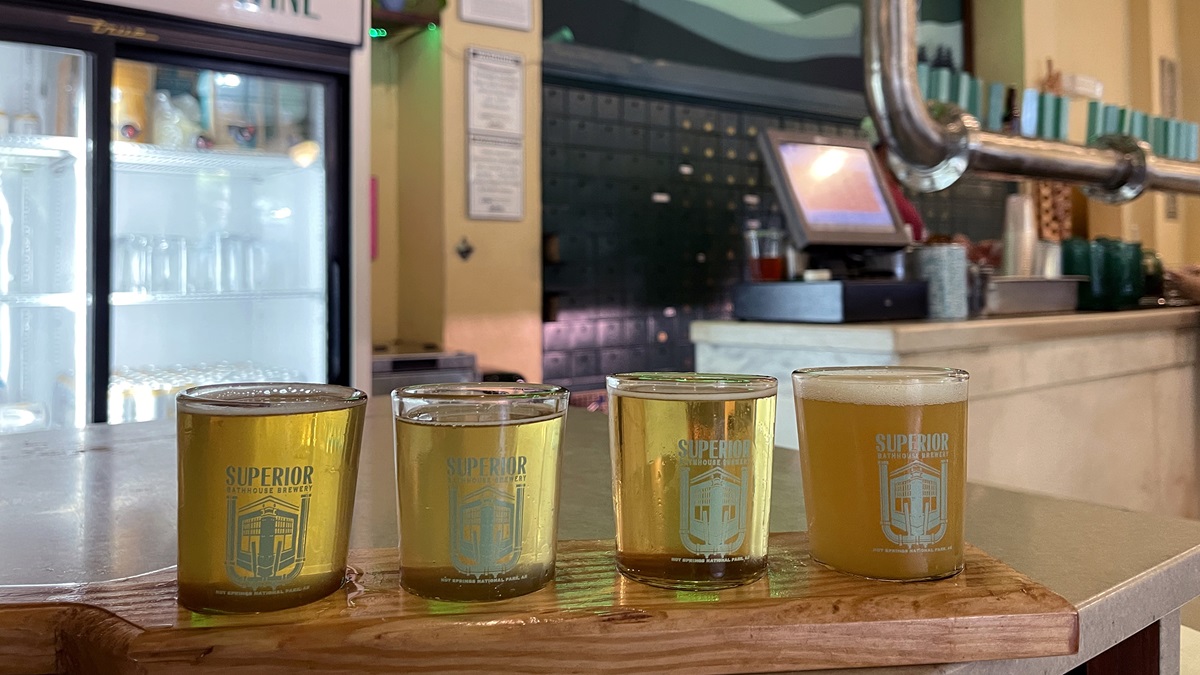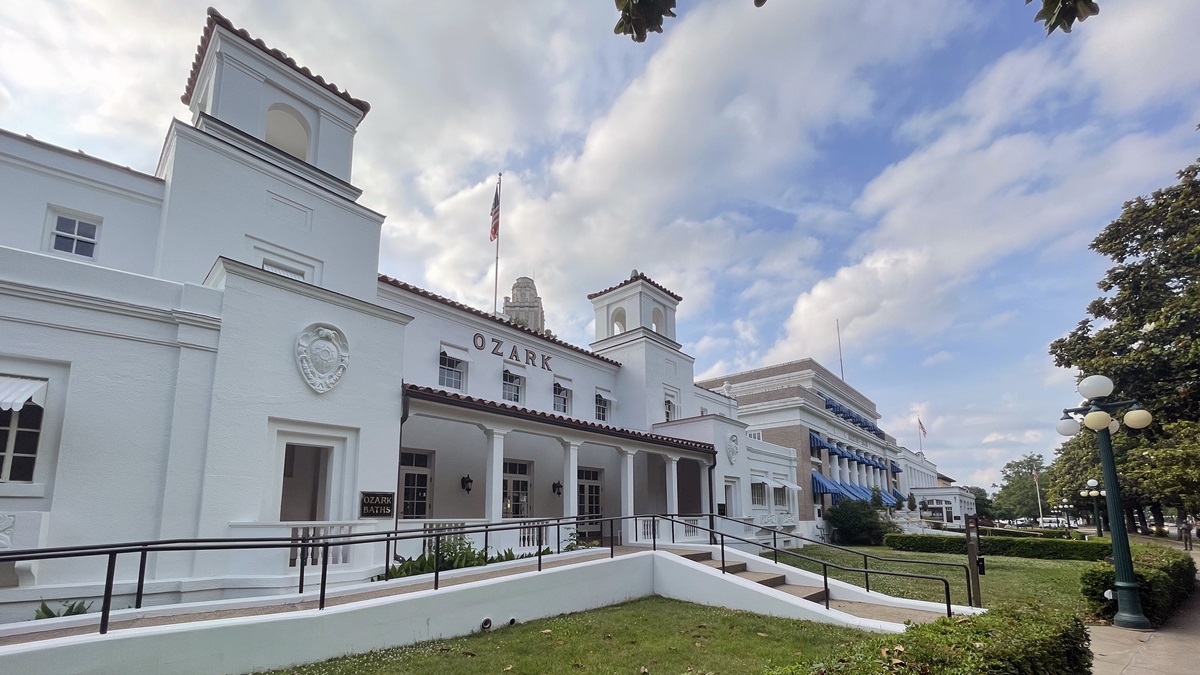A national park experience like no other
Hot Springs, Arkansas
Fly to Memorial Field in Hot Springs, Arkansas, and spend a weekend in the city’s historic downtown, where you can have a national park experience like none other in the country.
Book a traditional hydrotherapy experience or opt for a modern spa experience in one of two spas operating in historic Bathhouse Row using the famous Hot Springs National Park thermal mineral water.
Have a beer bath (a sample of each brew on tap) at Superior Bathhouse Brewery, the first brewery in a national park and the only brewery to use thermal spring water as the main ingredient in its brewed beer or root beer.
Walk the Grand Promenade along the lower west slope of Hot Springs Mountain to find numbered green boxes, part of the system used to collect approximately 700,000 gallons of thermal water flowing each day from the mountain. As you walk, spot the steam rising for a chance to see display springs or a stream of hot spring water running down the mountain.
Fill bottles of the tasty—and tested—water so you can “quaff the elixir” at home. There are several thermal spring fountains and cold spring fountains throughout the park and downtown area.
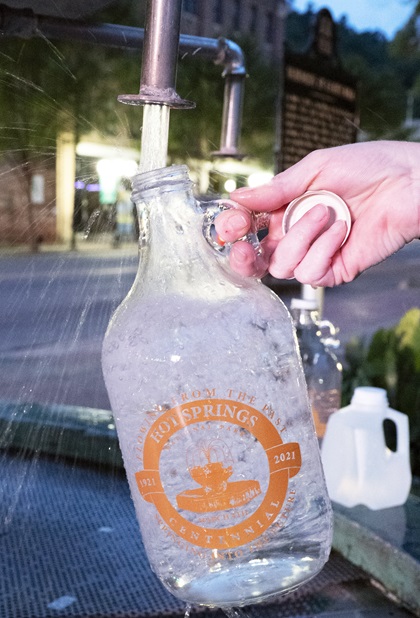
Hot Springs National Park turns 100 years old this year, though its federal protection predates many other parks. Congress created Hot Springs Reservation in 1832 to preserve the 47 thermal springs that were sacred to Native Americans then used by European settlers seeking relief from an ailment or a chronic health issue, and eventually considered a health and wellness destination visited by celebrities, well-known athletes, and mobsters.
The spring water starts out as rain falling on nearby mountains and takes about 4,400 years to travel roughly 6,000 feet deep into the Earth before reemerging at the hot springs. Rudimentary bathhouses were built in the 1800s and replaced with brick and stucco structures by the early 1900s. The industry declined by the 1960s and today there are eight historic bathhouses remaining on Bathhouse Row, all constructed between 1892 and 1923.
Visiting Hot Springs National Park offers a mixed nature and urban experience. At 5,500 acres, the park is the second smallest of the nation’s parks; only St. Louis’ Gateway Arch National Park is smaller.
The park’s densely wooded hillsides surround the historic downtown of Hot Springs, a city about 50 miles southwest of Little Rock. The area is within the Zig-Zag Mountains, a section of the Ouachita Mountains of central Arkansas and eastern Oklahoma. The sharply angular folds of the rock when seen from above give the section its name.
The park is free and has 26 miles of hiking trails. Its Pullman Trail, the only trail in the park that allows bicycles, connects to the city’s Northwoods Trails. You can also explore via two scenic drives: One goes up the North Mountain and a second takes you up the West mountain. There are numerous overlooks, and don’t miss the views from atop the 216-foot Hot Springs Mountain Tower.
I did all of the above and hiked one of the shorter trails accessed from downtown, but spent most of my time along Bathhouse Row.
Designated a National Historic Landmark in 1987, Bathhouse Row covers about six acres including the wide walkway along Central Avenue lined with magnolia trees, the eight historic bathhouse buildings and their manicured lawns, and the half-mile Grand Promenade that separates Bathhouse Row and Hot Springs Mountain.
You’ll want to visit each of the eight bathhouses, now owned by the National Park Service. All but one are operational, and you can enter at least the lobby of each at no charge to see displays on the history of the building.
Start with a visit to Fordyce Bathhouse, which was extensively restored in the late 1980s and is the free visitor center for Hot Springs National Park. You can talk to a ranger, get maps, and tour several stories of rooms that have been restored to their original state when the bathhouse opened in 1915. You’ll see original marble and stained glass throughout, plus interesting exhibits and artifacts showcasing early hydrotherapy techniques.
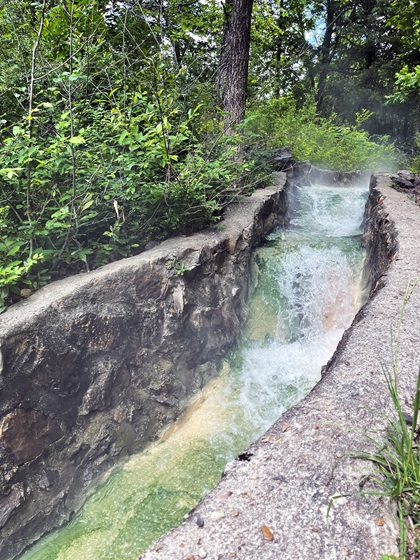
Ozark Bathhouse is now the Hot Springs National Park Cultural Center with free gallery exhibitions for the park’s artist-in-residence program and other temporary shows. It’s normally open Friday, Saturday, and Sunday afternoons.
Check out the Bathhouse Row Emporium in the Lamar Bathhouse. It’s a great gift shop operated by America’s National Parks, with proceeds supporting our national parks. I purchased 100th anniversary glass jugs here to fill with spring water before I left town.
Many people are surprised to learn there are no outdoor soaking opportunities at the park. Book an appointment or drop in to soak at one of just two of original bathhouse structures that currently operate as bathhouses. Buckstaff Bathhouse is the only one in continuous operation since opening. If you want the same experience as visitors in 1912, this is the one for you. The bathhouse uses the original bathtubs and equipment and offers a traditional bathing package.
I opted for a more modern experience at Quapaw Bathhouse. It is a full-service spa and for $20 you can put on a swimsuit and soak in the indoor, public thermal mineral water pools. The day I was there, the four pools ranged from 96 degrees Fahrenheit to 104 degrees Fahrenheit. The Quapaw Bathhouse also offers private baths, and in non-pandemic times they offered a popular steam cave experience where you could relax in naturally flowing 143-degree-Fahrenheit water from a spring that is said to contain one of the highest mineral contents of the area springs.
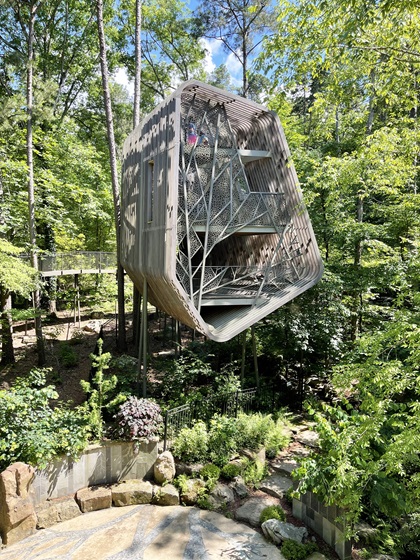
Hale Bathhouse, completed in 1892, is the oldest visible structure on the row. It reopened in 2019 as a boutique hotel with a mid-century modern style. The Hotel Hale has nine suites, each with a large soaking tub and hot spring mineral water pumped directly in, as well as a restaurant open to the public.
The red brick Superior Bathhouse was built in 1916 and was the smallest on the row, offering affordable hydrotherapy and massages. It’s now Superior Bathhouse Brewery, offering a family-friendly brewpub menu alongside flights and pints of craft beer using water from the national park.
Opposite Central Avenue from Bathhouse Row, you’ll find a mix of restaurants and retail, many still in their historic buildings. Among them: The Gangster Museum of America offers an hourlong guided tour of Hot Springs’ claim as the original Sin City; the Arlington Resort Hotel and Spa is known for its rich, famous, and infamous guests over the past 150 years; the Ohio Club is the oldest bar in the state; and the Legendary Vapors reopened in 2020 as a performance venue featuring its original bar that served elected officials, movie stars, and mobsters. Nearly all of them have a story or two about being the favorite spot of notorious gangster Al Capone.
You can easily fill a weekend staying just in the historic downtown and national park area, but you’ll want to visit again to explore other parts of this Arkansas town. Visitors come for the Oaklawn Racing Casino Resort and the 210-acre Garvan Woodland Gardens, as well as family-friendly attractions, from lakes and state parks to the Mid-America Science Museum and the 210-acre Garvan Woodland Gardens.
